#lner
Text

“Early Bird”
April 7, 2022 (16”x20”, acrylic on canvas)
#I’m trying to pick pieces to send to an art show overseas#and found this one! totally forgot I made it 😭#I thought youd all enjoy it so here it is :]#lmk if 2022 me got the headcode right#shes missing her front coupling 😔#art#kips art#acrylic painting#real life railway#<- painting of one assume it’s the LNER#lner#lner a3
159 notes
·
View notes
Text
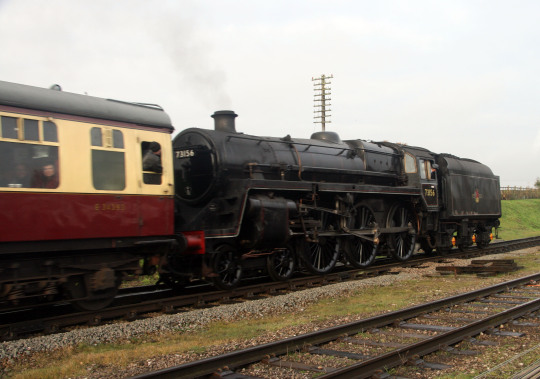
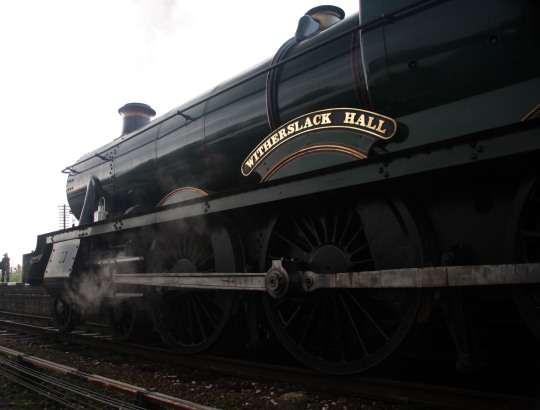







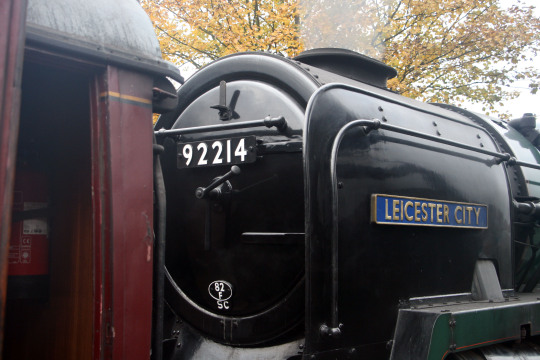
Great Central Railway, Last Hurrah Gala 2019 (Part 1)
#steam locomotive#england#winter#photography#steam engine#steam train#train#engine#locomotive#Great central railway#GCR#LMS#LNER#british railways#smoke#steam#photograph
86 notes
·
View notes
Text
Train fact: NAMED TRAINS!
So you've probably heard of the Flying Scotsman. Big green thing, turned 100 this year, probably the most famous locomotive in the UK, if not the world. Adapted into Thomas the Tank Engine with a whole lot of charisma and eyebrows. But did you know that name wasn't hers originally?
'The Flying Scotsman' is actually the name (formerly a nickname) of the train. The locomotive is Flying Scotsman's monster named for it. She was given the name in 1924, to help promote said service at the British Empire exhibition. Any engine, with any rack of coaches, or any train set, can be the Flying Scotsman.
Right now, it's run by LNER's new Azumas, which get a special little outfit about it:
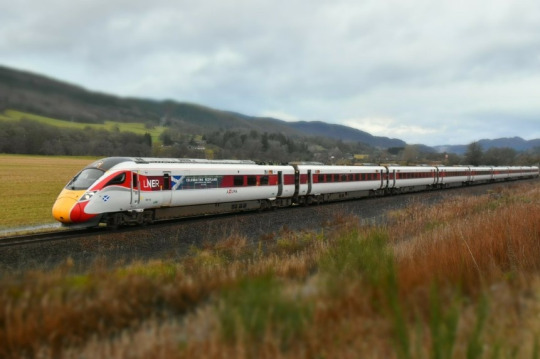
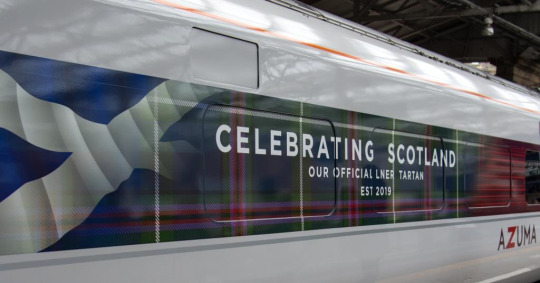
Most of the named trains in the UK were phased out with steam (although you can still catch the Sheffield continental from Sheffield to St. Pancras, or the Northern Lights from King's Cross to Aberdeen, among a handfull of others) but they live on elsewhere.
Some are luxury touring trains, like Japan's Seven Stars in Kyushu (left) or South Africa's Blue Train (right).


Transport isn't really the goal here. They sell out months in advance and cost anywhere from hundreds to thousands of dollars, depending on the class of ticket you get. They're an Experience, and a very cushy experience at that. Just look at their interiors!

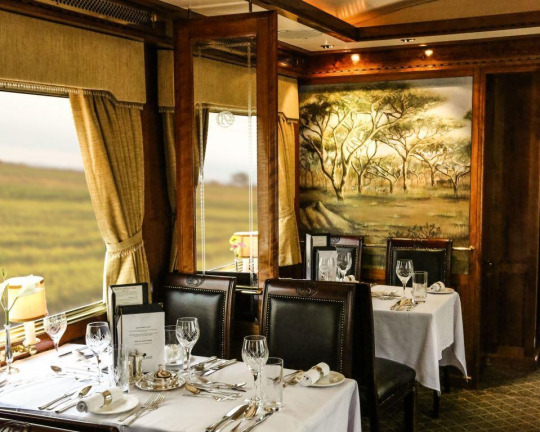
(yes, that's a piano)
But the vast majority of named trains in operation (as far as I can tell) are regularly-running exepress services across Asia.
Japan names their Shinkanens, India, Pakistan, Bengladesh & Sri Lanka often name their intercity expresses. These are practical, long-distance services, often named for monuments, like India's Ajanta Express, named for the Ajanta caves:


Or their operating regions, like Sri Lanka's උත්තර දේවී | Princess/Queen of the North:

Some North American countries also kept historic named routes, like Amtrak's Sunset Limited, or Canada's Ocean, which has operated continuously since 1904:

but my personal favorite named services are Australia's historically-nicknamed "The Fish", named after one of its drivers:

and the numerous trains that have been companion-nicknamed "The Chips" to match.
#Train facts!#ids in alt text#Sri Lanka Railways#LNER#modern LNER! Modern LNER! I know!#South Central Railway#Indian railways#NSW Train Link#via rail canada#the blue train#seven stars in kyushu#LNER Azuma
168 notes
·
View notes
Text

Chose your new mikado boyfriend (or girlfriend)!!!
Tank engine edition!!!
48 notes
·
View notes
Text

LNER A4 Gang
From left to right: Dominion of New Zealand, Dwight D Eisenhower, Empire of India, Golden Eagle, ???
26 notes
·
View notes
Text
How Did the Big 4 Affect Ideas About Scrap for the Steam Engines:
Alright, so in the Railway Series, we know that scrap and the idea of scrap is horrifying to the engines. But the real question is: was this a universal thing? Were all the engines equally horrified, or were there differences.
I mean, from that one infamous illustration in the Railway Series, it seems pretty universal...

But I think that if we dive a little deeper, there may be a few other factors at play, which collectively create very different views on scrap - and they all have to do with the Big 4. I'm going to explain them by size, so let's start giant and get smaller.
LMS:
The LMS engines would not be as surprised to hear they're being replaced and scrapped as other companies. Why? Well, we have to look back a bit. In the 1920's, the LMS was a bit of a hodgepodge of constituent railways and their engines. The Midland 'small-engine' policy did mean that a lot of the bigger engines were frowned upon, but in general the engines were just... there.

This changed with Stanier. When Stanier came along, he began building larger, faster, more powerful engines - and thus a lot of the older, smaller classes were axed. Engines classes like the Black Fives, Coronations and 8F's could do the work of these older engines much better!

There was only one class of engine built by the Furness that survived into BR ownership, and they weren't the only company with this happening. The engines of the LMS would've been accustomed to these ideas. And where does D261 come from? Well, the Class 40 diesels were used on the West Coast Mainline - D261 would be very used to the steam engines being very accepting of the idea that this was 'their time', and therefore stunned at how the Sodor engines acted.
The opposite end of this was that smaller engine classes were very afraid of being withdrawn. Edward's a great example of this - he watched his entire railway be taken over and all his friends and family replaced - and he fears he might be next. It drives him to extreme lengths to prove his worth, just to try and gain a few more years. Donald and Douglas are another example of this; as Caledonian Railway engines, they were generally under the threat of being scrapped all through their careers, and this created a desire to prove themselves and survive.
The LMS as a company committed to this 'purge' of smaller, older classes, and thus the engines of the LMS would have been far more used to and accepting of the idea of being scrapped as compared to others. It was part of the company culture! It wasn't universal by any means, but it had an impact, especially in the English part of the LMS.
LNER:
The exact opposite of the LMS. The LNER was a railway that was throughout its existence very, very poor. And while it did build some stunning-looking express engines...
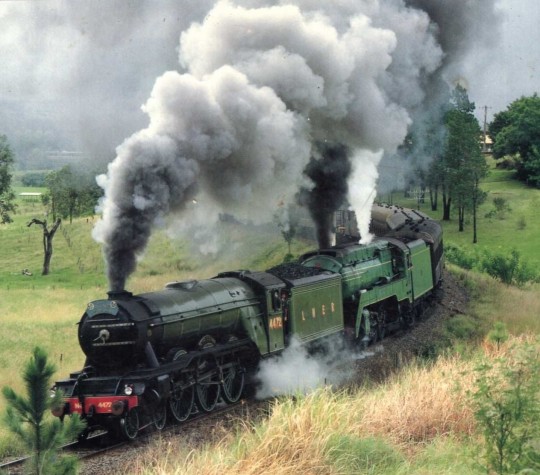
... in actuality, many of the engines running on the LNER were constituent engines that were just kept going. A good example of this would be the C1 Atlantics, which were introduced in 1902, and weren't completely withdrawn until 1950!

The LNER just didn't have the money or the ability to commit to a drastic newbuild scheme like the LMS did. That isn't to say that old engines weren't scrapped, but it did mean a lot more of the older classes weren't. And when a large body of engines survive for 50 odd years, the culture of elongated existence survives with them. Gordon is so badly affected by the Modernisation Plan personally because his company culture was one of preservation and extended service. His brothers would have quite happily told him that even when they were supplanted by the A4's that they'd be around for a long time yet, because that's how the LNER worked. And then they weren't and Gordon was stunned.
And remember, the LNER is the railway that preserved City of Truro alongside a bunch of its elderly engines at York. This railway had a culture that was built around a sort of trickle-down duties. As express engines were supplanted, they simply moved down the chain.
Speaking of City of Truro...
GWR:
This is another railway whose engines are stunned by the Modernisation Plan, but for a very different reason. Both the GWR and the LMS scrapped a large number of engines in the 1930's, but unlike the LMS, the GWR focused on engines who were at the end of their useful lifespan.
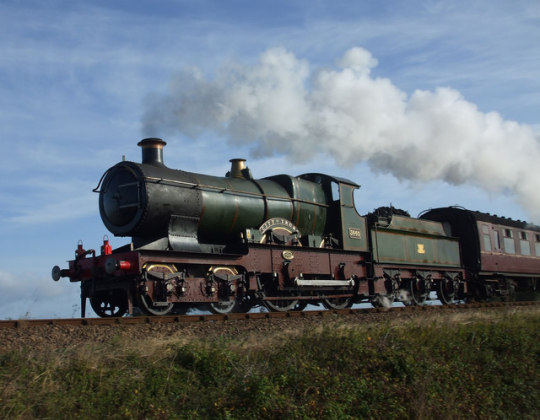
City of Truro was around 30 when withdrawn. For an engine introduced at the same time as the C1 Atlantics, this seems short - but its about average for the GWR at the time. The shock to the GWR engines is not the fact they're being scrapped - it's the fact that engines not at the end of their useful lifespans are being scrapped.
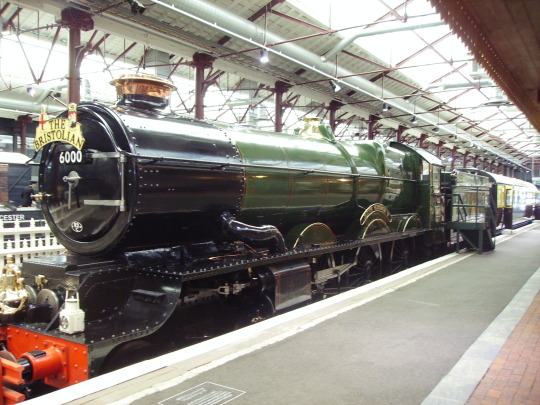
The King class was built in 1927 and nearing the end of their lifespan, but the Modified Halls weren't, and neither were the 9400's. Their withdrawal and subsequent scrapping was what really shocked Western engines.
Oliver's class was built in the 1930's, and would have expected to survive into the late 1960's and 1970's. The sudden withdrawal of them all would have been a great shock, and one of the driving factors behind his escape.
And then in the Railway Series, Duck doesn't act all that surprised to hear steam engines are being cut up - but he is hostile to diesel engines. The reason? Because diesel engines aren't just replacing the old engines in the natural GWR order of things, but supplanting the entire lot. He's relatively fine with Bear though because unlike many of the other diesels, Bear's class could be very easily perceived as being a natural progression of GWR engines. They took over the jobs of Castles and Kings - engines built in the 1920's and nearing the end of their GWR lives. There is of course also his outburst, which gives off a very GWR vibe - telling an engine off for insulting another railway? I wonder which of our Famous Eight has also done that...
Southern:
Right, so the Southern is possibly the most interesting case of them all. And the reason for that is this:
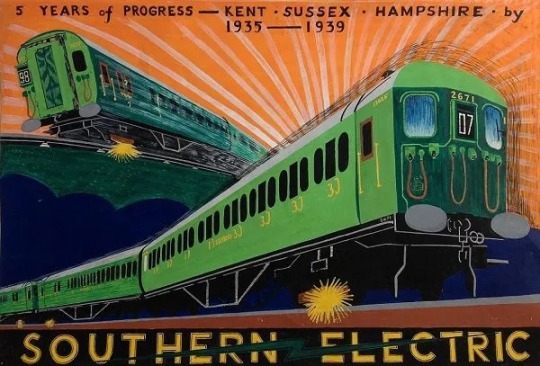
The Southern Railway was both the smallest of the Big 4 and the most passenger orientated. As such, they naturally gravitated towards a program of electrification, which they saw as the best way to maximise their profits. Engines on the Southern would have been invariably told that they would be withdrawn someday when the electrification reached their part of the line. That is a level of certainty that would have a massive impact on how the engines viewed their fate.
It also meant that the Southern Railway was not focused on replacing the steam engines they already had with new ones. This allowed some truly ancient engines to make it to British Railways.

This is Fenchurch, and when withdrawn in 1963 he was the oldest engine working on British Rail. He was built in 1872 - so that's a career of 91 years. And another class that was hitting pensioner years in British Rail was the Adams Radial Class, built in 1882. Both Southern Railway engines that found a niche duty that wasn't going to be electrified or upgraded anytime soon.
Even the E2's had their own niche at Southampton docks! They were a failure of a class when built, and yet were still in service in the 1960's. Thomas the tank engine himself has remarkably little to say about modernisation in the books - his job is threatened by a diesel, and while he's horrified that it's a diesel, he's not shocked he's being replaced. Even though he spent a tiny amount of time in the south, its culture managed to penetrate his smokebox.
But there is one other railway that has a central role in this, and it is of course British Railways.
British Railways:
Right, so this is the one company that is the cause of much of the above commentary to become obsolete. When amalgamated, British Rail was meant to electrify the country's railways slowly and steadily, with steam engines making up the difference. And at the onset, they withdrew and scrapped many of the older, smaller classes of engines and replaced them with the Standards - something very similar to LMS and GWR practice, and also not unfamiliar to the LNER. The really problem comes with the Modernisation Plan in 1955.
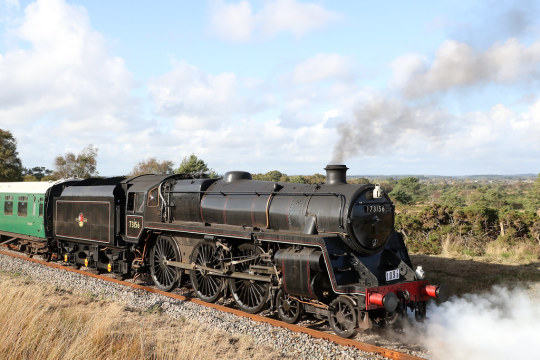
The Standard Five class were built until 1957 - two years after the publication of the Modernisation Plan which explicitly stated that BR would scrap all steam. The 9F's were being built until 1960. At the longest, these engines got less than twenty years. At the youngest, some were withdrawn after only five years.
And that's what shocked all the older engines. It's not the fact they're being scrapped - ever since the conception of the railways, engines have been being scrapped. It's the magnitude of the scrapping and the wanton destruction of young, healthy engines. It's not that they're being replaced - that was always going to happen, all the engines knew that. It's the speed of the Modernisation Plan, the scrapping of brand new engines and the fact that steam engines were replaced with Pilot scheme diesels who were mostly failures.
That's what caused the engines to fear scrap and hate diesels.
And while I would love to delve into the diesels and what happened to them, that's its own massive thing.
I would like to note that this does not really take into account specific incidents, but rather general trends that would have led to more widespread knowledge. The single incident involving one engine in Aberdeen doesn't really permeate railway gossip and ideology, but an entire class being withdrawn does.
I would also like to acknowledge the fact none of the above pictures are mine.
#ttte edward#ttte gordon#ttte donald#ttte douglas#ttte oliver#ttte duck#lner#LMS#gwr#southern railway#british rail#long reads#weirdo shit#I thought I'd share this brainfart#thomas the tank engine#railway series#railways#britain
148 notes
·
View notes
Text
BITTERN: WHO DID THIS?! 😡😡😡 OWN UP IMMEDIATELY COWARD!
#gwr#lner#ttte young iron#ttte#ttte green arrow#ttte city of truro#ttte bittern#ttte flying scotsman#ttte pendennis castle#ttte young iron au
24 notes
·
View notes
Note

What are they doing?
They're express engines. They're discussing the state of the railway (gossiping)
but fun thing, there are only 4 A4s here
far right isn't an A4, it's Hush Hush

yep, the LNER's rebuilt white elephant. By all acounts I've found, post rebuild she was just a non-standard A4. Although it is worth noting Gresley was considing rebuild the A4s with the boiler fit to no.10000, so he was impressed with that at part of the rebuild at least.
heading left, we have Golden Eagle
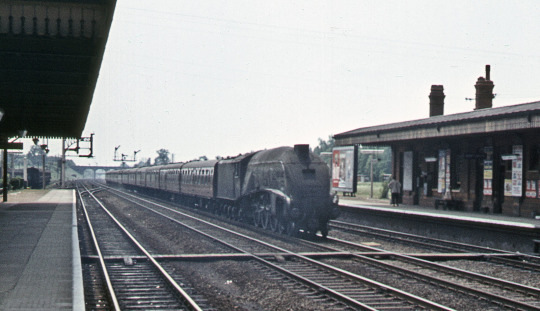
Empire of India (my beloved)

Golden Shuttle, who was later renamed Dwight D. Eisenhower and Preserved
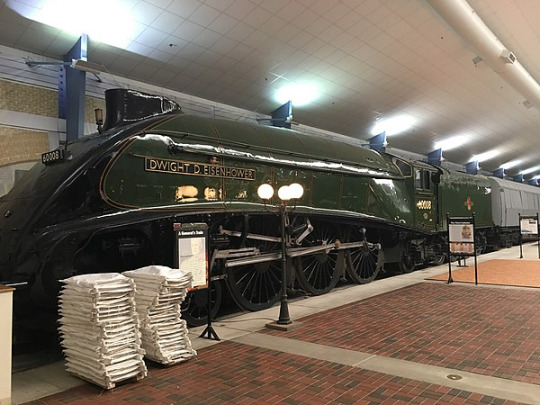
and Dominion of New Zealand

#Hazel Asks#Ask Hazel#Hazel Q&A#LNER#London North Eastern Railway#LNER A4#LNER W1#4-6-2#4-6-4#A4 Pacific
32 notes
·
View notes
Text

Come have a drink, darling✨
Guys I am down bad for Mr. Gresley here. I’m so sorry. Like I am mad at myself I fell for his charms. If he would ask me for a dance I would say yes.
#ttte#thomas and friends#ttte human au#ttte humanized#ttte gijinka#ttte flying scotsman#flying scotsman#lner a3#lner#thomas and friends humanized#human au#ttte humanisation#oh dear oh dear oh dear#i am down bad#so so so bad#Scott you little asshole you stole my heart and semblance of purity#i am looking respectfully#fabulous mustache#the thoughts are not pure my friends
39 notes
·
View notes
Text
Happy Mallard Day!
Most people in my country will be celebrating tomorrow, July 4th. I’m a bit unusual for an American in that I’m always more excited for July 3rd, because a remarkable feat of engineering history happened that day in 1938 (in multiple senses of the word). Today I’m going to tell the story of a locomotive named for a duck.
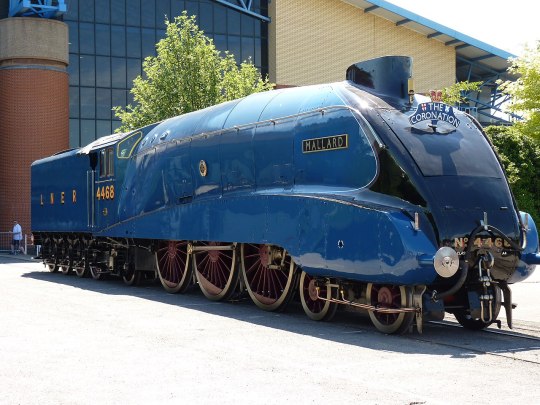
(Image: 4468 Mallard, a streamlined 4-6-2 Pacific locomotive, sitting pretty in York, England, United Kingdom. She is painted bright blue with red wheel spokes.)
The story begins well before July 3rd, 1938, of course - mechanical engineer Sir Nigel Gresley was well established in his position as the CME of the London and North Eastern Railway by that date. In 1923, his most famous creation, a 4-6-2 Pacific A1 numbered 4472, took to the rails for the first time. Originally numbered 1472, within a year of running between London to Edinburgh she received her more familiar 4472 after the LNER finally settled on a company-wide numbering scheme - and the name she’d be best known under, Flying Scotsman. She became the company’s flagship locomotive and solidified Gresley’s ability to design Pacifics in the mind of the public.
Her most important contribution to what I’m about to get into the meat of here, though, occurred on November 30th, 1934. On that date, pulling a light testing train behind her, Flying Scotsman hit 100 mph, becoming the first locomotive to hit that speed whilst being officially measured. Other locomotives may have reached 100 mph before, most notably GWR 3700 City of Truro and NYC 999, but this was the first time the speed was officially recorded, and so Scotsman got her name into the record books.
Dating back to the 19th century, railroads in Great Britain competed against each other in what was known as the Race to the North, in which they actively attempted to outdo each other and get passengers from the south, usually London, up to various destinations in Scotland. Nobody ever actually said they were racing, of course, but in retrospect it was pretty obvious what was going on as the railroads introduced faster and faster services. By the 1930s, the railroads had been consolidated into four companies - the Big Four (the Great Western, the Southern, the London, Midland and Scottish, and the heroes of this story, the London and North Eastern). The LMS controlled the West Coast Main Line, and the LNER controlled the East Coast Main Line. (This is important.) In 1927, the LNER started running the named train Flying Scotsman non-stop from London to Edinburgh, utilizing corridor tenders to perform crew changes at speed without stopping. Not to be outdone, the LMS beat them to the punch, running non-stop services between London and Glasgow and London and Edinburgh on their own, and it was officially on. Although speeds were still within a reasonable range at this point, both railroads knew they needed to go faster, and Sir Nigel Gresley looked to Germany.
In Germany, a new streamlined service called the Flying Hamburger had been introduced. This was a diesel train set that ran between Hamburg and Berlin at remarkably high speeds - it had an average speed of 77 mph and could hit around 99-100 mph at its maximum. For regular service, this was impressive, and Gresley wondered if the same could be done using steam power. He knew streamlining was the key, but the LNER knew that the diesels in Germany didn’t have the same passenger capacity as their steam locomotives could pull in carriages, so he needed to get creative. He looked to Bugatti for inspiration; their racecars, in their resplendent blue, were but one thing the car company was working on - they were making streamlined railcars, as well. Gresley took note of their designs, and his new locomotives would eventually pay homage by being colored Bugatti blue.
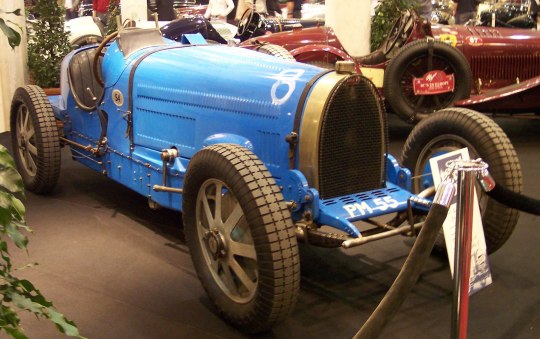
(Image: a Bugatti Type 54 racecar, painted in a vivid blue.)
By the time Flying Scotsman hit 100 mph in 1934 and another Gresley Pacific locomotive, A3 2750 Papyrus, managed to hit a whopping 108 mph without streamlining, the LNER knew that Gresley was capable of the task, and they allowed him to design a streamlined locomotive. Gresley set to work making improvements to his A3 design, and the first four A4s were born.

(Image: an unidentified A4 Pacific locomotive.)
The A4s were fast, hitting 112 mph on the inaugural run of the Silver Jubilee service between London and Newcastle in 1935. Gresley, of course, was not satisfied - he knew he could still improve his design, and at any rate, his competition over at the LMS was going to be trying to catch him. He went back to the drawing board to make the A4s even better.
As this was going on, the LMS was indeed playing catchup, and they introduced their beautiful Coronation class locomotives, designed to pull the Coronation Scot starting in 1937. The first several of them were streamlined in gorgeous, bright casings, and they caused a stir, taking the British speed record back at 114 mph in an attempt by 6220 Coronation that ended with a sudden braking and a whole lot of kitchenware being flung every which way in the dining car. Engineer/driver T.J. Clark and fireman C. Lewis kept her under control, but the passengers were not amused, and speed records were shelved for the time being...until, once again, Germany entered the fray.
Back in 1936, a German locomotive, the DRG Class 05, set a land speed record for steam, hitting 124.5 mph. Gresley was aware of this and had it in the back of his mind as he improved his A4s. He experimented with giving some of them a Kylchap exhaust system, an innovation developed by French locomotive designer André Chapelon after the work of Finnish engineer Kyösti Kylälä. Chapelon’s work went woefully under-acknowledged, but Gresley paid attention and appreciated his work, and it would pay off. Wind tunnel tests proved a bit frustrating at first until a fortuitous accidental thumbprint helped to move the smoke up and over the locomotive instead of in the crew’s faces, and the stage was set.
4468 Mallard rolled off the line at Doncaster Works on March 3rd, 1938, her name derived from Gresley’s love of breeding waterfowl. Indeed, many of her sibling locomotives were also named for birds, like 4464 Bittern, 4467 Wild Swan, 4902 Seagull, and 4903 Peregrine, but the duck was about to steal the show. Mallard spent the next few months getting used to working and being broken in so she wasn’t brand new, and on the day she turned four months old, it was time to make history.
Mallard’s driver that day was a 61-year-old grandfather named Joe Duddington. As a locomotive engineer, he was experienced and knew how to take calculated risks, and so he’d been assigned to pilot her. With him on the footplate was fireman Tommy Bray and his massive tattooed arms, ready to keep Mallard fed as they drove into the history books. They were performing a “brake test” that day, or so the LNER told most people, passengers included, but Joe and Tommy knew what was actually going on. In the cab with them was an LNER official, Inspector Jenkins, and attached to the train behind the tender was a dynamometer car, there to record Mallard’s speed throughout her run. Since this was an alleged “brake test” the dynamometer car didn’t raise any eyebrows right away. Gresley himself unfortunately wasn’t in the best health that day and was unable to be present himself, but there were enough LNER officials on hand to see to it that everything ran smoothly. Mallard was fitted with a stink bomb of sorts of aniseed in case the big end bearing for the middle of her three cylinders overheated, as the A4s had previously had difficulty with this, and she set out heading northwards. The return trip was where everything was going to get serious.
Upon turning around to return south to King’s Cross, passengers were finally informed of what was going to happen and were given the opportunity to disembark and take another train if they were worried, especially given what had happened during the LMS record attempt a year prior. Everyone agreed to stay on board. Joe Duddington turned his hat backwards, a reference to George Formby’s character in the film No Limit, and opened the throttle.
Mallard slid back onto the main line, headed towards Grantham, where the speed-up was to begin. Unfortunately, work on the track limited her to only 15 mph at this stage, and Joe Duddington got her through the Grantham station at only 24 mph instead of the 60-70 mph she should have been at. Nevertheless, she began to build up more and more speed as she climbed up Stoke Bank, and Duddington had her at a solid 85 mph at the summit.
“Once over the top, I gave Mallard her head, and she just jumped to it like a live thing,” Duddington recounted later in an interview. Her speed rapidly increased, and she was soon hitting 110 mph, at which point he told her, “Go on, old girl, we can do better than this!” Mallard responded, and by the time she was flying through a village called Little Bytham, a blur of blue paint and pumping rods and flying ash, she had well exceeded the LMS record and was even with the German DRG Class 05. The needle in the dynamometer car tipped up higher and higher and surpassed the Class 05 by slipping up to 125 mph...then, for about a quarter of a mile, reached even higher, at 126 mph. She’d done it.
Mallard had to slow down soon after because of a junction, but Joe Duddington and Tommy Bray were sure she could have gone faster had they not had to slow for construction - they believed she was capable of 130. The big end bearing did overheat, and Mallard was detached from the train at Peterborough and brought back to Doncaster to be fixed up, but not before one of the most famous photos in railroad history was taken:
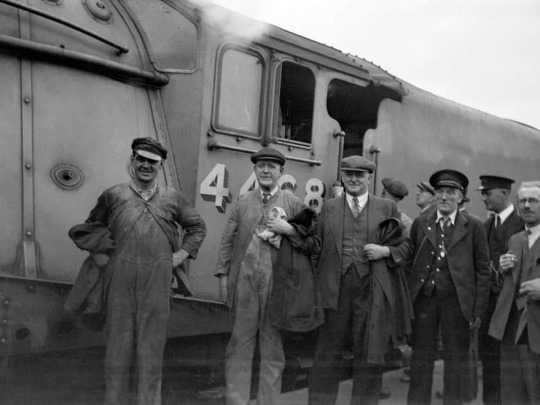
(Image: the crew poses in front of Mallard, a 4-6-2 Pacific locomotive numbered 4468, immediately after setting the speed record. L-R: Tommy Bray [fireman], Joe Duddington [driver/engineer], Inspector Jenkins, Henry Croucher [guard/conductor]. Joe Duddington has turned his hat around to face the correct way again after having it on backwards during the record run. Photo credit: National Railway Museum.)
Joe Duddington actually stayed on a bit past his retirement age to help free up soldiers for the war effort. When he finally retired, on his final day of work, he drove Mallard one last time.
Sir Nigel Gresley himself never accepted the brief stint at 126 mph, instead saying his locomotive set the speed record at 125 mph. But history has accepted the 126 mph as the true top speed, given that Mallard was possibly capable of even more, and today she has plaques on her streamlined cladding to commemorate her feat. A second record attempt was planned to see if she could go even faster, but World War II broke out and the idea was scrapped.
undefined
youtube
Tommy Bray eventually got on the throttle himself, fulfilling his own dreams. Both men are honored in a cemetery in Doncaster with a new memorial headstone for Duddington featuring Mallard on it.
As for Mallard herself, she continued working until April 25th, 1963, at which point she’d clocked nearly a million and a half miles in service. She was pulled for preservation for obvious reasons, and today she lives at the National Railway Museum in York, along with her dynamometer car that recorded her history-setting run. Five of her A4 siblings also survive, and a few of them are operational to this day, including the one named for her designer, Sir Nigel Gresley. Of all of his ‘birds,’ the one that flew fastest was the humble duck.
For more on Mallard and her creator Gresley, here are a few resources:
Mallard: How the Blue Streak Broke the World Speed Record by Don Hale is a great book on the subject that I enjoyed thoroughly. It does have a Kindle edition if you’d prefer an ebook variation, as well, and most major book retailers carry it on their websites.
The National Railway Museum, Mallard’s retirement home, has a 3D experience/ride of sorts that simulates what it was like to be running with her that day, the video of which is online here. Note the music, which mirrors her three cylinders pumping away. The video isn’t able to be embedded, but you can watch it here. There’s also a child-friendly version, too.
Lastly, the appropriately named prog rock band Big Big Train did a song about Mallard called East Coast Racer, which regularly moves me to tears because this locomotive means so much to me and they tell her story so lovingly.
undefined
youtube
I actually recommend checking out the live version, too, because they show the photo of the crew at the end and every single time I start sobbing.
If you want to visit the old girl herself, she’s at the National Railway Museum in York in the UK, and they have a ton of amazing resources and incredible locomotives and rolling stock in their collection. I’d highly recommend checking them out if you can!
Happy Mallard Day, everyone. Fly far, fly fast, make history.
#LNER Mallard#LNER 4468 Mallard#LNER#LNER A4#I like trains#I spent literal hours on this whoops#but she's really important to me
50 notes
·
View notes
Text


introducing the big four. the main troublemakers. berwyn (GWR) is probably the only one who still has this photo.
ask box is now open as well !
#inbetweenthelines#ibttl4#lner#lms#southern railway#gwr#great western railway#london midland scottish railway#london north eastern railway#ttte#the railway series#railway series#personification#gijinka#thomas the tank engine#thomas and friends#railway#british rail#oc art#digital art
41 notes
·
View notes
Text


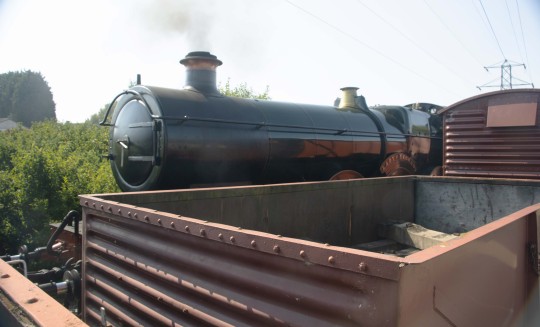



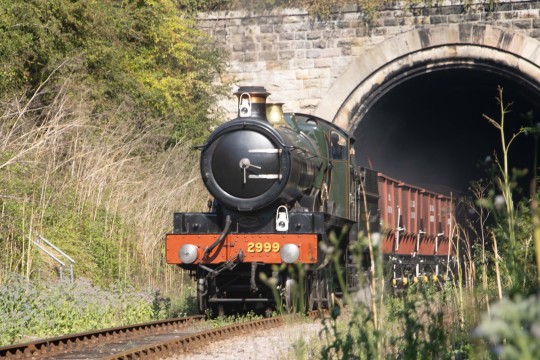


Lady of Legend at the Nene Valley Railway (Part 4) 2023
#steam locomotive#england#photography#steam engine#steam train#train#engine#locomotive#LNER#british railways#smoke#steam#photograph#GWR#nene valley railway#summer
24 notes
·
View notes
Text
Part 10 of shipping railway companies.
Ok, I think this one may be a long one so any relationships will be saved until next post.
GWR is enby and one of the older folk, along with LNER and Southern (about age, not gender). Like it's fellow older generation, they are not quite what they used to be.
However GWR has always been and still is the cool outsider, they were built different and they have had its own unique style which they have kept since a child.
8 notes
·
View notes
Text

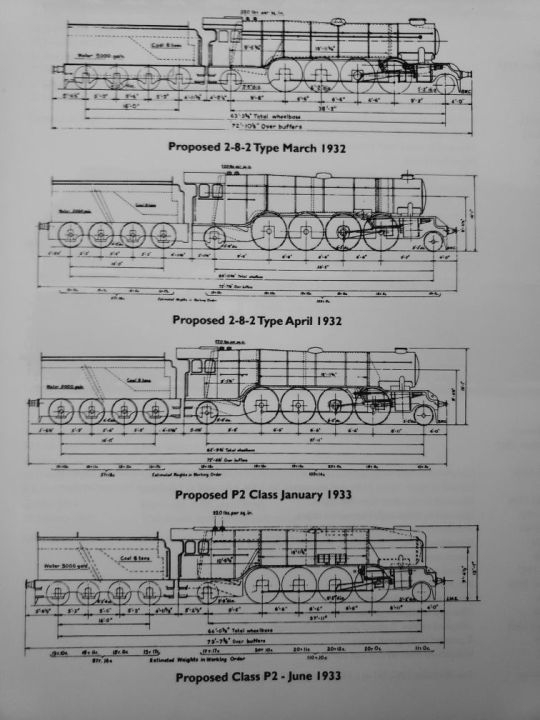
Choose your Mikado Boyfriend/Girlfriend!!!!!!!!
#train#real train stuff#I never realized that the P2s went through so drafts#lner#lner p2#trains#mikado
11 notes
·
View notes
Text

Gramps taking kids out for the weekend
130 notes
·
View notes
Text

(if you get it you get it) 🦆
#Sir Nigel Gresley and his beloved Mallards#A4#LNER#LNER A4#locomotive#Mallard#Gresley#Sir Nigel Gresley#London North Eastern Railway#LNER A4 Pacifics#Sir Herbert Nigel Gresley#streaks#125.88 mph#Dwight D Eisenhower#Union of South Africa#Dominion Of Canada#Bittern#4468#4464#4489#4488#4496#4498#is it too late to make the aspect ratio the same as an A4???? someone#🦆
33 notes
·
View notes